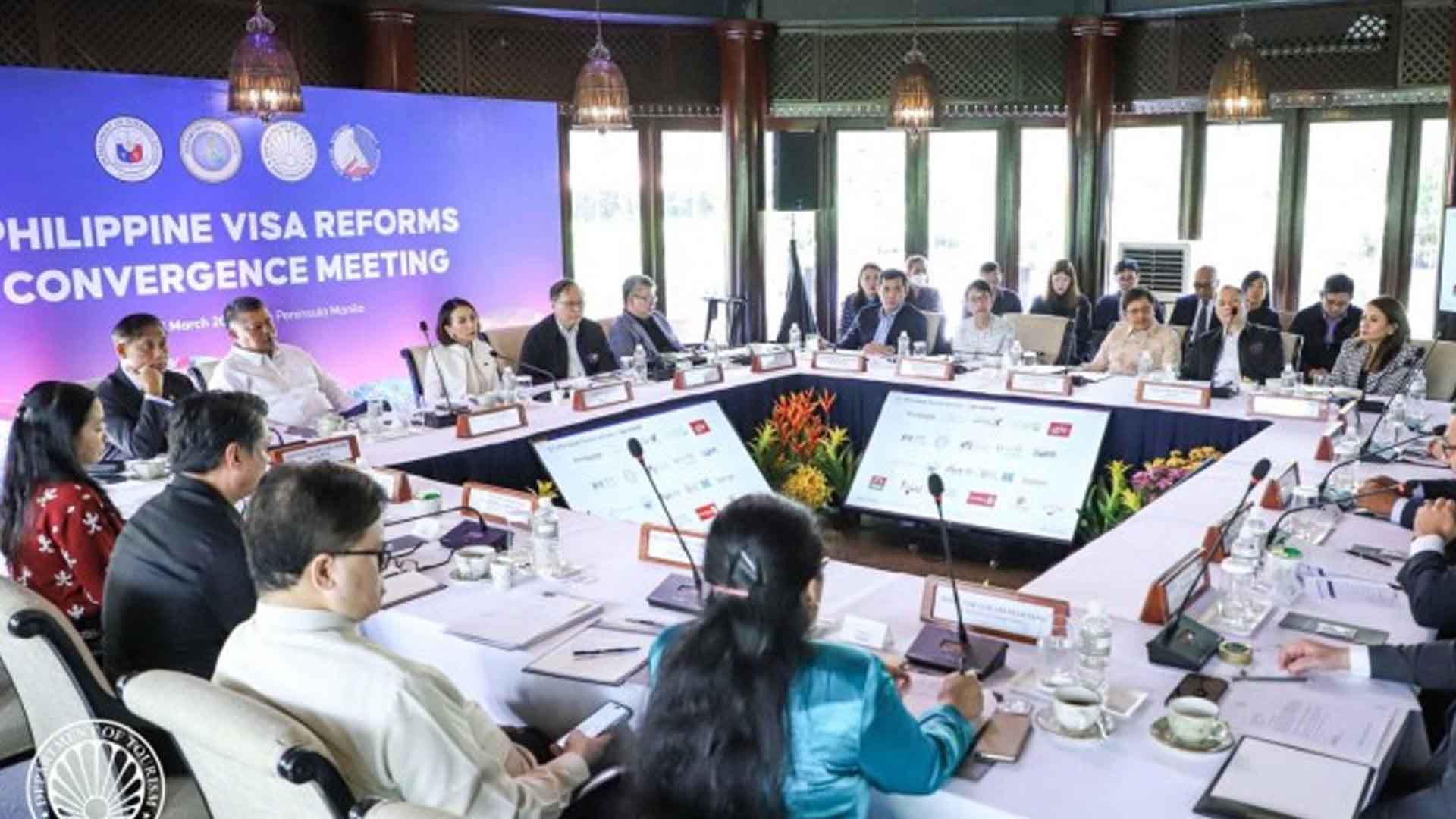The Department of Tourism (DOT) is working with other government agencies to ease entry for tourist source markets, particularly India and China.
At a high-level convergence meeting on Friday, Tourism Secretary Christina Frasco discussed with the heads of the Bureau of Immigration, and Departments of Foreign Affairs, Justice, and Information and Communications Technology the need for “visa reforms” to address tourism bottlenecks.
Citing China and India’s potential to bring in more travelers, she said government agencies must explore the provision of electronic visa (eVisa) to their nationals.
Based on DOT data, at least 58 percent of the total Indian visitors were repeat travelers, hence the necessity to exert effort to sustain and increase their entry.
India, the DOT noted, has risen from being an opportunity market for the Philippines to an important market source, ranking eighth among top foreign visitors in 2022 with 51,542.
“We are the only country that presently does not provide the convenient electronic visa for Indian nationals. This is a huge market that the Philippines has yet to explore,” Frasco said during the meeting held at a hotel in Makati City.
Indian Ambassador to the Philippines Shambhu Kumaran agreed that this is a “very opportune” time for Manila to ease visa processes for its nations as Indian travelers visiting Southeast Asia “could potentially be looking at a new destination.”
China, meanwhile, remains a coveted market for the Philippines, which recorded more than 1.7 million Chinese visitors prior to the pandemic.
Citing reports from airlines, Frasco said Philippine consular posts in China have issued advisories “limiting the acceptance of visa applications per day from only around 60 to 100.”
This is compared to the average of 508 to as high as 2,704 Philippine visas issued per day in China prior to the pandemic.
“Of our low target of half a million Chinese coming into the Philippines, we would need to issue 1,704 visas per day. If we are to target the medium scenario of a million Chinese into the country then we would need to issue 3, 409 visas per day,” Frasco said.
“If we are to target two million Chinese coming to the Philippines and which is the desired target of the Department of Tourism, then we would need to issue 6,818 visas per day for a total of 1.8 million visas in a year, which is not too far off from the 1.5 million issued in 2019,” she added.
The DOT stressed that China’s sizable population translates to massive opportunity for the Philippines, considering the 2019 data that it has the largest number of outbound tourists all over the world at 160 million Chinese citizens traveling to various countries.
“Chinese outbound tourism will surpass 2019 levels by 2024 and therefore, time is of the essence for the Philippines to ensure that the ease with which Chinese citizens can come into the Philippines can be approved,” she said.
Frasco said revenue losses could reach USD2.51 billion “if the difficulties in obtaining visas is not immediately addressed.”
“Airlines and charter operators have already approached us expressing grave concern of the present limitations. According to them, they may not be able to increase the flight frequencies that they are very much prepared to resume due to low passenger numbers and airfares and travel packages may become too expensive and therefore, not competitive,” she added.
Education, cruise tourism
The DOT also recommended the simplification of process requirements for Waiver of Exclusion Ground and exemption of qualified students to apply for Special Study Permit for the English as a Second Language (ESL) industry.
Further, it asked concerned agencies to revisit the draft and make final inputs for finalization, as well as the digitalization of the platform and making it an e-Landing Permit amid the resurgence of cruise tourism.
In 2019, Austria-based research market specialist Bonard has identified the Philippines as the fifth largest ESL provider in the world, with around 70 percent of the whole ESL industry in the country based on the island province of Cebu, which caters to students from Japan, South Korea, Taiwan, China, as well as emerging markets Mongolia, Thailand, West Asia, and Russia.
The country is anticipating 139 ports of call for cruise tourism with over 117,000 passengers pegged for 2023 alone.
Support for reforms
The agencies, for their part, vowed to look into the matter and expressed their support for the proposed reforms on the country’s special markets, citing, at the same time, the need to “balance legal requirements,” in accordance with the law.
“The DICT (Department of Information and Communications Technology) will definitely put it as one of our priorities to support the Department of Tourism and the Department of Foreign Affairs,” DICT Secretary Ivan John Uy said.
DFA Assistant Secretary Henry Bensurto Jr. said they would study the recommendation and come out with an immediate feedback.
A cap was imposed on visa issuance for Chinese tourists due to the previous surge of Covid-19 cases in China.
The meeting was also attended by Justice Secretary Jesus Crispin Remulla, Undersecretaries Brigido Dulay and Jose Cadiz Jr., and Assistant Secretary Jose Dominic Clavano IV; DICT Undersecretary David Almirol Jr.; Presidential Management Staff Assistant Secretary Montano Nazario Jr.; BI Commissioner Norman Tansingco; DFA Executive Director Christian De Jesus and Director Leilano Feliciano; DOT Undersecretary Shahlimar Hofer Tamano, OIC-Undersecretary Verna Buensuceso, Assistant Secretary Maria Rica Bueno, and OIC-Assistant Secretary Warner Andrada; and Tourism Attaché for Shanghai China Rene Reyes. (PNA)







